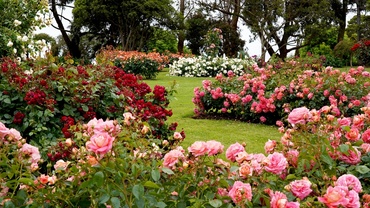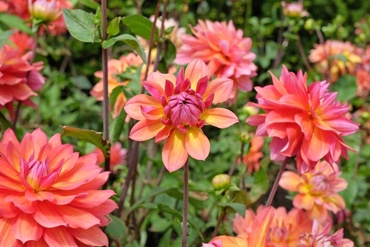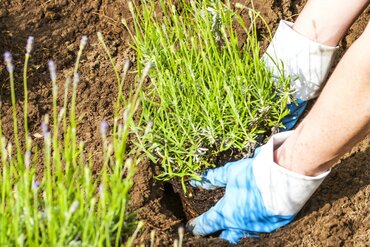How to grow hydrangeas
Hydrangeas are back in style, and there’s a fantastic range to choose from. There’s one to suit every garden, from the classic pink and blue mopheads to paniculate hydrangeas with huge conical flowerheads. Hydrangeas flower for ages in late summer, they grow well in the shade, and their flowerheads keep on looking good even once they’ve dried. Hydrangeas are easy to grow too – just follow our simple tips.
Hydrangea types
To get the best out of your hydrangea, it’s essential to know what type of hydrangea you have. Here are the most common types:
-
Hydrangea macrophylla – these are the traditional mophead and lacecap hydrangeas, with pink, blue or white flowers. One of the most striking features of the pink and blue hydrangeas is that the flower colour changes depending on whether they are grown in acidic or alkaline soils. (Acidic soils produce blue flowers, and alkaline soils produce pink.) Mopheads have rounded flower heads made up of large florets. Lacecaps have flatter flowerheads with an inner centre of tiny florets surrounded by a ring of larger ones.
-
Hydrangea arborescens have huge domed flowerheads with a more delicate appearance than the traditional mopheads. Hydrangea’ Annabelle’ is one of the most popular Hydrangea arborescens cultivars with its enormous white flowerheads.
-
Hydrangea paniculata produces large conical flower heads that often change colour as they mature.
-
Hydrangea quercifolia (oak-leaved hydrangea) has large lobed leaves very similar in shape to oak leaves. In autumn, the leaves turn dramatic shades of orange and red before falling.
-
Hydrangea anomala (climbing hydrangea) is a self-clinging climber with white lace-cap flowers in summer.
Where to grow hydrangeas
Hydrangeas do best in moist, well-drained soil in light shade. Dig in plenty of organic matter like garden compost or well-rotted farmyard manure before planting to help your soil retain moisture and water regularly in dry periods. There’s usually no need to feed hydrangeas, but you should mulch in spring with leaf mould, compost or manure.
How to prune hydrangeas
Pruning hydrangeas doesn’t have to be complicated. Here’s how it’s done.
-
Mophead and lacecap hydrangeas: leave the faded flower heads on the plant over winter and prune in late spring, cutting back to a pair of solid buds below the old flower heads. Remove any dead or crossing branches. To encourage new shoots on mature plants, cut one or two old stems back to ground level.
-
Hydrangea paniculata and Hydrangea arborescens: Prune in early spring, removing dead wood or crossing branches. Cut the previous year’s stems by one third, cutting above a pair of strong buds.
-
Climbing hydrangeas: There’s no need to prune climbing hydrangeas for the first few years while they are getting going. Prune mature plants annually after flowering to keep them to size, shortening any very long shoots to healthy buds lower down.
Our centre has a great range of hydrangeas and other shrubs, so visit us soon in Esher, Surrey and Titchfield to pick your favourite!





